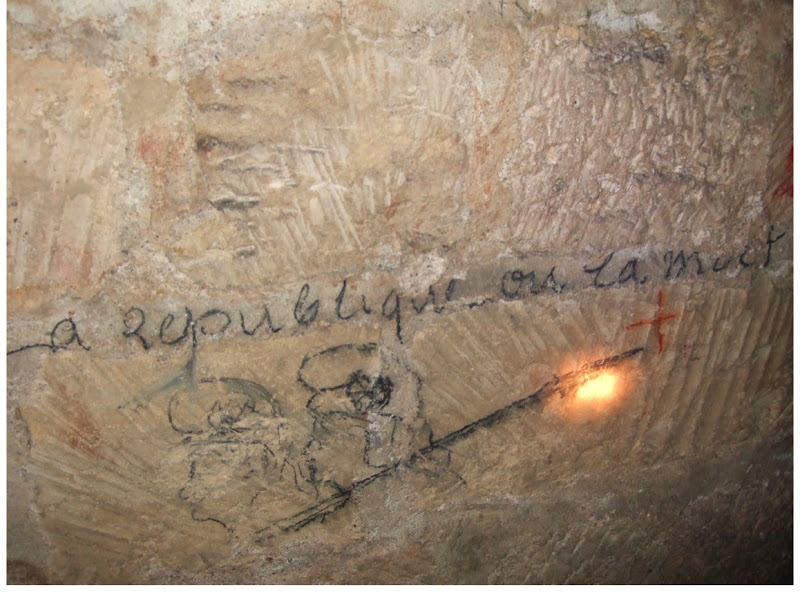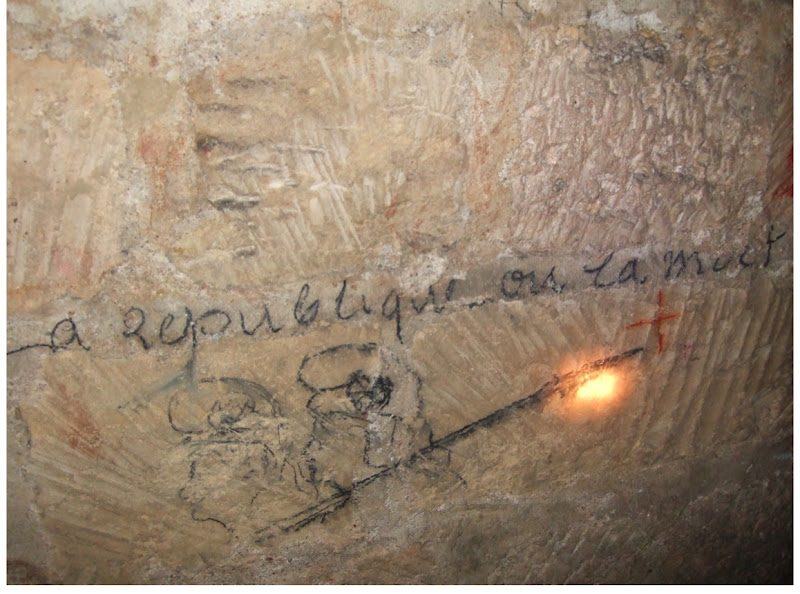In Tehran (Oct. 14th)
My first full day in Tehran I spent at the offices of the Iranian National Observatory … Project. Project, because the observatory does not exist yet. The building itself has just been constructed, and people have moved there only a few weeks ago; arriving at the front door I was greeting by a paint-stained astronomer, and I almost half expected to be asked to help out with the building work. The building is even further north than the guest house, in a hilly wooded area at the end of a long dirt track. The building grounds were taken from the Shah after the revolution, like so much of the land now belonging to the IPM (The institute for physics and mathematics).
But … Tehran? Although the area around the guest house is filled with expensive and modern apartment blocks, the dramatic backdrop of dry desert mountains and the black-clad women crossing the street made it clear to me, leaving the IPM that morning, that this was not a European city. I admit that I was perhaps just a little apprehensive when I was first invited to a workshop in Iran, almost three years ago; that trip never happened because of Ahmadinejad’s election and a subsequent mass resignation of University staff. With the exception of the traffic, however, Iran seemed to me one of the most unthreatening places I have ever visited. But what did people really think?
We had lunch at large table in the INO gardens. I ate a delicious kebab with rice (which I would soon become very familiar with) and a very interesting yoghurt drink. We admired the large blackboard extending all along the outside wall of the building, perfect for those long difficult equations but perhaps less useful for an observational astronomer. Perhaps a clear giveaway that the institute’s director is a theoretical cosmologist.
Everyone was talking about Ahmadinejad’s television appearance the previous evening. In fact, his face was the first I saw on an Iranian television set: arriving late at night at the IPM guest house I found the guards at the gate house intently watching the presidential broadcast. At the lunch table, although I don’t speak Farsi, it was clear from the tone of the conversation that Ahmadinejad’s pronouncements were not taken very seriously. They also told me that there was a certain apprehension each time one of these television appearance was scheduled — who knows what ridiculous pronouncement would be made which would damage even further Iran’s standing in the outside world?
I thought of Viktor Strum, nuclear physicist living in totalitarian Russia in Vassily Grossman’s epic ‘Life and Fate’ which I had just finished reading, and I even went so far to tell a little of his story to those at the dinner table. Thankfully however the parallels with that epoch and today in Iran are slender. “We can say anything we want here” affirmed one of the physicists at the dinner table, “it’s just not so certain anyone will pay any attention to us.”
Lunch was over, and returned to my computer to continue preparing the course which I would have to give in a few days.

